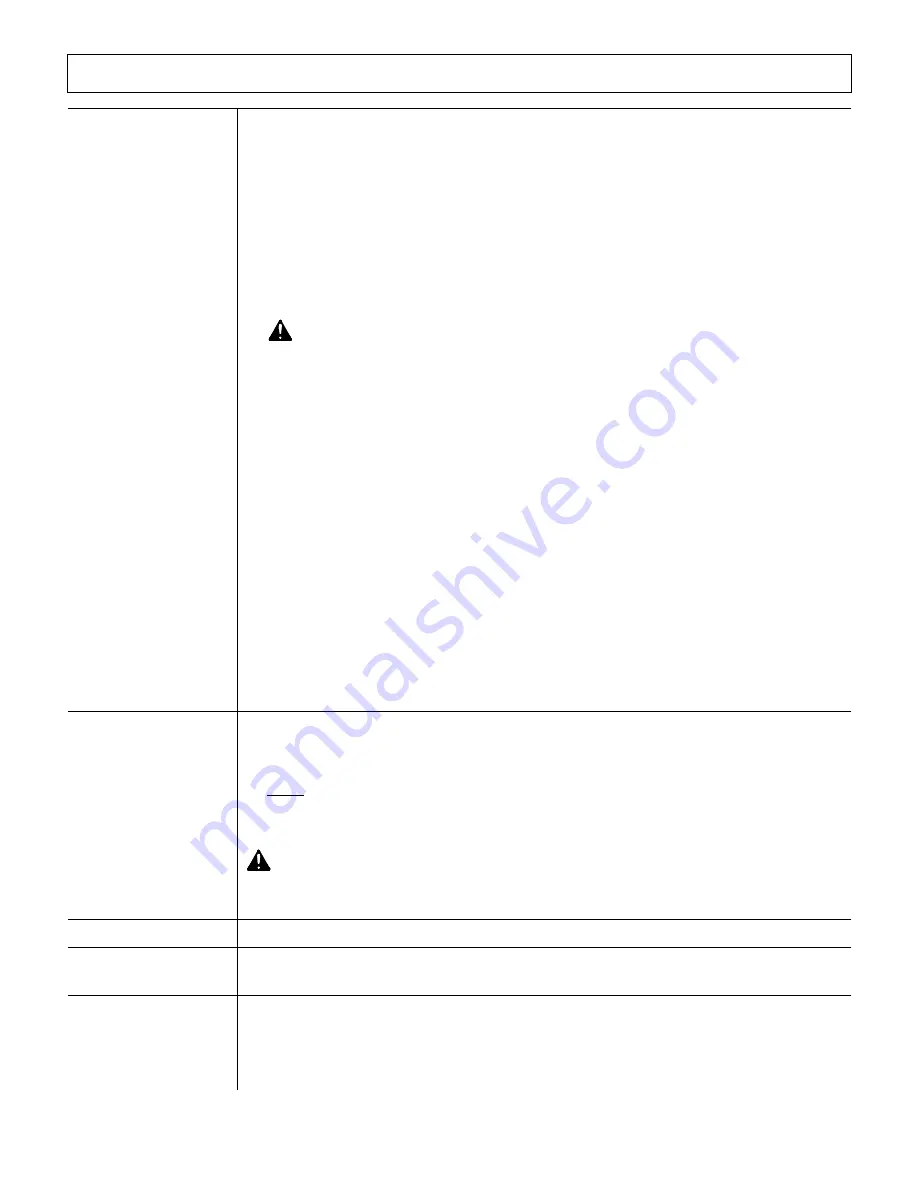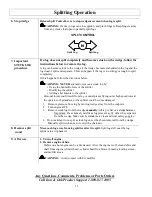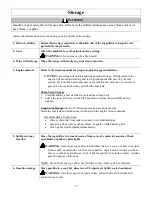
Before Each Use – Inspection / Maintenance
14
5. Hydraulic system
Check the hydraulic system carefully:
1.
Visually inspect all hoses, tubing, clamps/fittings, pump, and cylinder for cracks,
fraying, kinks, or other damage.
2.
Check all components for oily residue, which may indicate a leak.
Do NOT operate the log splitter if there is any indication of damage or oily residue.
Small leaks in hydraulic lines can cause severe injuries and can also be an indication of
catastrophic failure in the near future. The life of hydraulic hoses may be from a few
months to a few years, depending on use and storage patterns.
WARNING
: High fluid pressures and temperatures are developed in hydraulic
log splitters. Hydraulic fluid escaping through a pin hole sized opening can burn or
puncture skin, resulting in wounds that could cause blood poisoning, infection,
disability, gangrene, amputation, or death. Therefore, the following instructions
should be heeded at all times when inspecting or servicing the hydraulic
components of the log splitter:
Stop the engine, disconnect the spark plug, and move the split control lever
back and forth to relieve pressure before changing or adjusting hydraulic
system components such as hoses, tubing, fittings or other components.
NEVER check for leaks with your hand. Leaks can be located by holding a
piece of cardboard or wood (at least two feet long) with your hand at one end
and passing the other end over the suspected area (wear eye protection). Look
for discoloration of the cardboard or wood.
NEVER adjust the pressure setting of the pump or valve.
If injured by escaping fluid, no matter how small the wound is, see a doctor
immediately. A typical injection injury may be a small puncture wound that
does not look serious. However, severe infection or reaction can result if
proper medical treatment is not administered immediately by a doctor who is
familiar with injection injuries.
6. Hydraulic oil level
Check dipstick to make sure hydraulic oil level is to the fill line with cylinder
retracted.
Fill as needed. Note: Do not thread in the oil dipstick when checking
hydraulic oil level.
Note: Fill the tank with 10 wt AW32, ASLE H-150, or ISO 32 hydraulic oil. If the
log splitter will be run for long periods of time in outdoor temperatures above 70
F,
we recommend changing the hydraulic oil to DEXTRON III.
WARNING:
NEVER remove the hydraulic oil fill cap when the engine is running or
hot. Hot oil can escape causing severe burns. Allow log splitter to cool completely
before removing hydraulic oil fill cap.
7. Engine
Inspect and perform engine maintenance as directed in the engine manual.
8. Spark arrestor
muffler
If the engine is equipped with a spark arrester muffler, clean and inspect it regularly
(follow spark arrestor manufacturer’s service instructions). Replace if damaged.
9. Tires
Make sure tires are fully inflated and in good repair if you will be towing the
splitter.
See tire sidewall for recommended tire pressure.
Summary of Contents for BH2W2016GX
Page 2: ...Hazard Signal Word Definitions 2...
Page 6: ...Safety Label Location 6 1 2 3 4 5 6...
Page 28: ...Parts Breakdown Exploded View Rev A 28 Fig 05 6 7 8 7 6 6 6 8 6 1 6 8 6 1 6 7...
Page 36: ...Assembly Instructions 36 Manual Bag Contents...
Page 40: ...40 This page has intentionally been left blank...







































